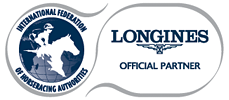The Thoroughbred Safety Committee, which in June recommended the elimination of steroids in race training and racing, a ban on toe grabs and a series of whip-related reforms, has issued four additional recommendations pertaining to drug testing and laboratory standards, uniform penalties for drug rules and prohibited practices violations, TCO2 testing, and a national system to report injuries during both racing and training.
These latest recommendations were announced today by committee chairman Stuart S. Janney III at The Jockey Club’s 56th annual Round Table Conference on Matters Pertaining to Racing in Saratoga Springs, N.Y.
The Thoroughbred Safety Committee is a standing committee of The Jockey Club that was formed on May 8 to review every facet of equine health and to formulate recommended actions to be taken by the industry to improve health and safety in Thoroughbred racing.
The following are some of the recommendations' highlights.
In regard to drug testing and laboratory standards, the committee calls for the creation of a task force to:
develop a business plan for the most efficient and cost-effective infrastructure for equine drug testing and research;
develop strict equine drug testing laboratory standards;
develop a uniform request for proposal from state racing commissions for drug testing laboratory services that requires adherence to those standards; and
develop and maintain a facility to store frozen samples for future analysis.
At their meeting on Saturday, The Jockey Club Board of Stewards agreed to underwrite the cost of developing the business plan referred to above.
In regard to uniform penalties for drug rules and prohibited practices violations, the committee calls for:
The immediate adoption and implementation by all state racing commissions of the RCI Model Rule on Uniform Classification Guidelines and Penalties which apply to trainers, veterinarians and owners.
The implementation of this model rule by all state racing commissions no later than Dec. 31, 2008.
In regard to TCO2 testing, the committee calls for:
The adoption of RMTC recommendations on the prohibition of the use of alkalinizing substances by the RCI Model Rules Committee, RCI Board of Directors and all state racing commissions.
As an interim measure, all North American Thoroughbred racetracks to consider implementation of these recommendations by “house rule.”
All state racing commissions to publish the TCO2 levels of each horse tested.
In regard to the Equine Injury Database system developed by The Jockey Club Technology Services Inc. and InCompass Solutions Inc., the committee calls for:
The institution by the RCI Model Rules Committee, RCI Board of Directors and all state and provincial racing commissions of model rules requiring all racing associations, training facilities and individual licensees to participate in a commission-approved injury reporting database.
The collaboration between the American Association of Equine Practitioners, racetrack practitioners, regulatory veterinarians and equine veterinary surgeons to develop standardized protocols and procedures for pre-race, post-race and post mortem exams.
Racetracks and state/provincial racing commissions to require and fund pre- and post-race examinations; and postmortem examinations for all horses that die on the grounds of a licensed racetrack or training center.
“Medication issues continue to haunt this industry and they are and will continue to be a priority for this committee, as evidenced by several of today’s recommendations,” said Stuart S. Janney III, chairman of the Thoroughbred Safety Committee. “We once again vigorously encourage the respective industry organizations to act on these recommendations in a timely manner.”
In addition to Janney, the Thoroughbred Safety Committee includes John Barr, James G. (Jimmy) Bell, Dr. Larry Bramlage, Donald R. Dizney, Dell Hancock and Dr. Hiram C. Polk Jr. Each is a member of The Jockey Club.
The committee will continue to meet going forward to investigate and discuss additional recommendations on other critical issues.
In addition, The Jockey Club today launched a specially dedicated section on its website that contains all of the committee’s recommendations, resulting actions and more. It is accessible through the Safety Initiatives icon on The Jockey Club’s home page at http://www.jockeyclub.com.
This morning’s Round Table Conference was devoted almost exclusively to equine health and safety, medication and Thoroughbred breeding. A transcript of the conference will be available within the next few days on The Jockey Club’s website at http://www.jockeyclub.com.
The Jockey Club Round Table Conference was first held on July 1, 1953, in The Jockey Club office in New York City. The following year, it was moved to Saratoga Springs, N.Y., where it has been held every August since.
|



